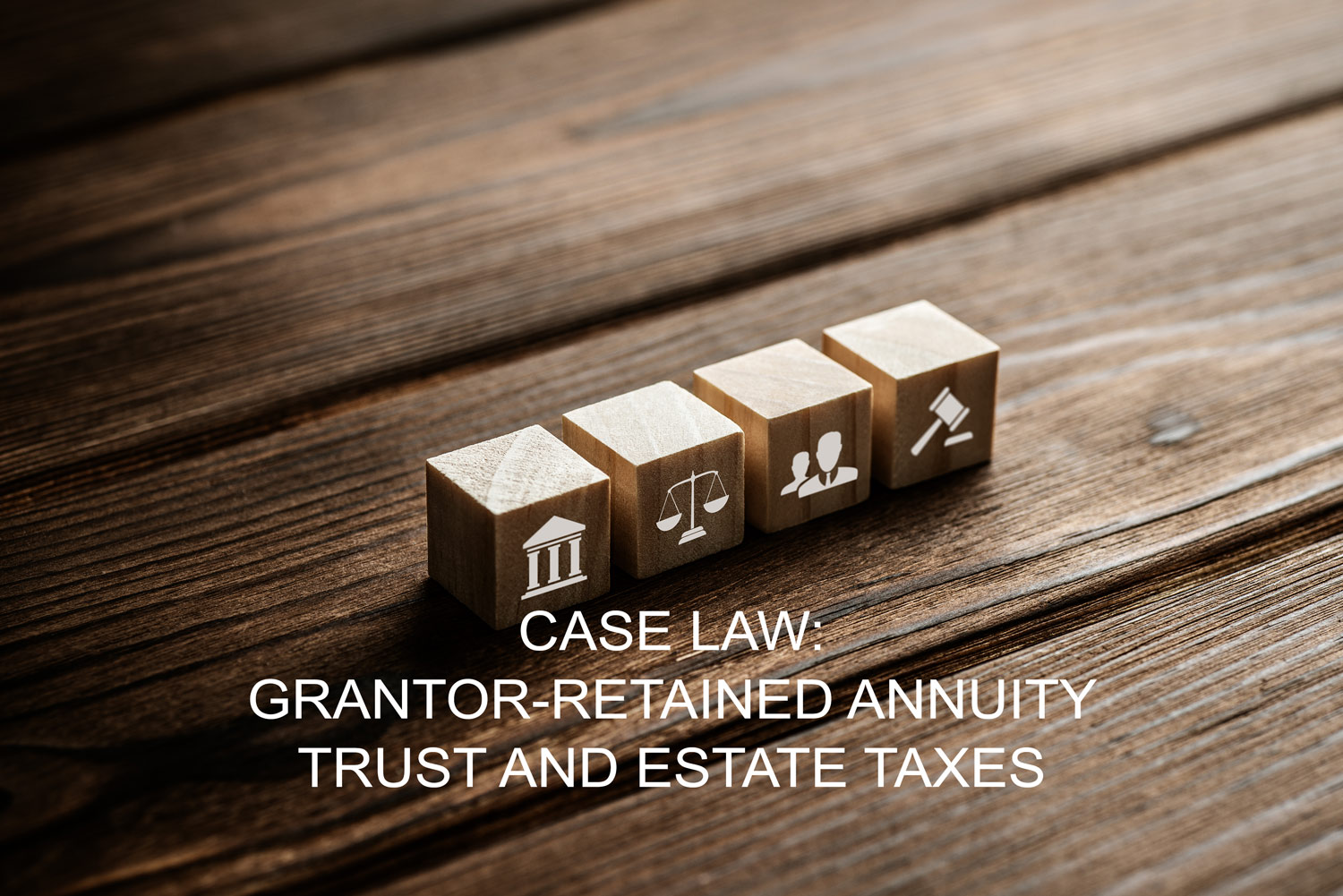
Real property used in a taxpayer’s trade or business is excluded from the IRS’s definition of a capital asset, enabling taxpayers to take advantage of the generally more beneficial ordinary loss deduction rather than the capital loss deduction upon its sale. As the petitioners discovered in Keefe v. Commissioner, 2020 WL 4032469 (2d Cir. July 17, 2020), however, the treatment of a sale of real estate as a sale of business property rather than a sale of a capital asset needs to be backed up by the facts, and an incorrect characterization on a tax return can be quite expensive.
A Look at the Facts
David and Candace Keefe purchased a 14,400-square-foot historic mansion in Newport, Rhode Island in January 2000 for $1.35 million. The Keefes intended to restore the waterfront property and never resided there. In October 2002, they executed a declaration of condominium dividing the property between Wrentham House and Carriage House. They sold Carriage House, but retained Wrentham House, which was uninhabitable, having been vacant for decades. According to the terms of the declaration of condominium, if the Keefes made plans to rent Wrentham House, they were required to notify the owners of Carriage House of those plans, as well as register Wrentham House with the city of Newport as a short-term rental or guest house.
The Keefes originally estimated that the restoration of Wrentham House would cost $2 million and secured financing to pay for it. However, due to delays, they had to obtain additional financing to cover increased costs. The restoration began in 2002 and was completed in May 2008. In May 2004, the Keefes listed the house for sale, and except for one week in 2008, it remained on the market continuously until it sold in July 2009. During the restoration, the Keefes learned of state and federal tax credits that could help defray some of the costs of the restoration: The state tax credit required the restoration to be historically accurate, and the federal tax credit required the property to be rented to tenants for at least five years. The Keefes only applied for—and ultimately received—the state tax credit.
Mrs. Keefe oversaw the restoration, and during the construction, the Keefes received two temporary certificates of use and occupancy in April 2007 and October 2007. The final certificate of occupancy was issued in June 2008. In 2006, the Keefes met with Laurie Hewitt Burke, a rental agent, to discuss renting Wrentham House. Burke inspected the house in 2006 and 2007 and began discussing renting it with clients in 2007. She did not advertise it online, however, as the renovations were ongoing. Although the Keefes originally hoped the construction would be completed in late summer 2007, after delays, they adjusted their goal for renting out the property until the summer of 2008. Although Burke continued to inspect the house and discuss it with prospective tenants, and although one client expressed interest, no rental agreement was executed nor was any security deposit paid. When the restoration was completed in May 2008, it was no longer offered for rent and was never rented. The Keefes never notified the owners of Carriage House of any rental plans or registered the house as a short-term rental or guest house with the city of Newport as required by the declaration of condominium.
During the restoration, the value of the property decreased significantly: It was appraised at $12.5 million in June 2005, but ultimately sold for $6.51 million in July 2009. In 2008, the Keefes took out a second mortgage conditioned on their continued efforts to sell the property. In addition to their agency agreement with Burke’s real estate firm, they also contacted three auctioneers, but no auction took place.
Arthur Yorkes prepared the Keefes’s original federal income tax returns for 2004 through 2009. The Keefes did not timely file their 2006-2008 returns and did not pay their federal taxes for 2004-2007. The IRS issued notices of intent to levy for their unpaid tax liabilities for each of those years. In their 2009 tax return, the Keefes reported to Arthur Yorkes that they were treating the sale of Wrentham House as a sale of a capital asset. However, after speaking to an estate planner, they decided it should have been treated as a sale of business property which they could offset using an ordinary loss deduction. The Keefes hired another firm to prepare amended tax returns for 2004 and 2009, as well as prepare their 2010 tax return. In their amended returns, they treated the sale of Wrentham House as a sale of business property that resulted in net operating loss and sought to offset their taxable income for 2009, reducing their taxable income to $16 and carrying the loss back to tax years 2004-2008 and carrying it forward to 2010 to reduce their tax liabilities in those years from a total of $746,445 to $89,171.
In May 2014, the IRS sent the Keefes a notice of deficiency for the tax years 2008-2010 for tax deficiencies, penalties, and additions to tax. In August 2015, the IRS sent another notice of deficiency for tax years 2004-2007, also determining tax deficiencies, penalties, and additions to tax. The Keefes petitioned the tax court for a redetermination of both notices of deficiency, asserting that the sale of Wrentham House was a business loss rather than a capital loss. The tax court refused, however, holding that the Wrentham House was a capital asset under I.R.C. section 1221 rather than a property used in trade or business under I.R.C. section 1231, and that the loss incurred from the sale was deductible only as a capital loss. On appeal, the Second Circuit Court of Appeals agreed, affirming the tax court’s ruling.
The Court’s Analysis
The Second Circuit Court of Appeals noted that section 1221(a) of the Internal Revenue Code defines a capital asset as “property held by the taxpayer (whether or not connected with his trade or business).”1 One of the statutory exceptions to the definition of a capital asset is “property used in [the taxpayer’s] trade or business.” In contrast, property held “for the production of income, but not used in a trade or business of the taxpayer, is not excluded from the term capital assets.”2 Although the Code does not define the term “trade or business,” in case law, real estate rental has been considered a trade or business “if the taxpayer-lessor engages in regular and continuous activity in relation to [renting] the property.”3 The Court, though noting its list was not exhaustive, considered a number of factors used in the determination of whether a taxpayer has engaged in such activity, including whether the taxpayer (or an agent):
- performs maintenance and repairs;
- employs labor to manage the property or provide tenant services; and
- purchases materials, collects rents, and pays expenses.
The Court also noted that the tax court had considered the Keefes’s efforts to rent the property.
After considering these factors, the Court concluded that the Keefes had “never commenced rental activity in a meaningful or substantive way.” To the contrary, the Keefes did not advertise the property online, sign a lease with any potential tenant, furnish the property for rent after the restoration was complete and it was ready to occupy, provide notice to the owners of the Carriage House or register the property with the city as required by the declaration of condominium to rent the property, nor did they receive any rental payments or security deposits. Although the Keefes took some “insignificant” steps to rent Wrentham House by engaging Burke as their rental agent, none of her efforts regarding renting the property occurred after the restoration had been completed and the house was ready for occupancy; further, the house was never offered for rent. In contrast, the Keefes made “significant” efforts to sell the property, which was listed for sale nearly continuously from 2004 to 2009. In addition, the Keefes chose not to seek the federal tax credit, which had a rental requirement.
In response to the Keefes’ contention that they had been engaged in a trade or business but had simply failed to achieve a business goal, the Court held that the cases upon which they relied4 were distinguishable: In those cases, the taxpayers were already engaged in a trade or business sufficient to support a finding that the asset in question was held for the use in that trade or business, even if the asset had not yet been used. In contrast, there was no evidence that the Keefes were already engaged in a rental trade or business prior to purchasing the Wrentham House. Not only had they never offered any other property for rent, they also never made any meaningful efforts to rent out Wrentham House.
Takeaways
Keefe v. Commissioner makes it clear that merely considering offering a property for rent or intending to do so is insufficient to amount to “regular and continuous activity” in relation to renting it. Simply engaging a rental agent who did no more than mention the property to clients during the restoration, prior to the date when it was certified for occupancy, and who never actually offered it for rent, was not enough to demonstrate that the Keefes were engaged in a rental trade or business.
The erroneous reporting of capital loss as ordinary loss can be an expensive mistake. Because their ordinary loss deduction was incorrect, the Keefes were liable for additions to tax pursuant to I.R.C. section 6651(a)(1) for failure to timely file their 2006-2008 tax returns. In addition, they were liable for accuracy-related penalties for tax years 2004-2010 for their substantial underpayment of tax under I.R.C. section 6662.5 Further, these penalties could not be reduced, as there was no substantial authority supporting the understatement; to the contrary, the authorities the Keefes cited in support of their contention that the sale of Wrentham House was an ordinary loss were, according to the Court, “factually distinguishable” and “not particularly relevant.”
1. I.R.C. § 1221(a)(2).
2. 26 C.F.R. § 1.1221–1(b).
3. Alvary v. United States, 302 F.2d 790, 796 (2d Cir. 1962) (citing Gilford v.Commissioner, 201 F.2d 735, 736 (2d Cir. 1953); Pinchot v. Commissioner, 113 F.2d 718, 719 (2d Cir. 1940); Grier v. United States, 120 F. Supp. 395 (D. Conn. 1954)).
4. Drew v. Commissioner, 31 T.C.M. (CCH) 143, 147, 160–62 (1972); Alamo Broadcasting Co., Inc. v. Commissioner, 15 T.C. 534, 537, 541 (1950); Carter-Colton Cigar Co. v. Commissioner, 9 T.C. 219, 220–21 (1947).
5. An understatement is considered substantial if it exceeds the greater of $5000 or ten percent of the tax required to be paid. I.R.C. § 6662(d)(1)(A).



